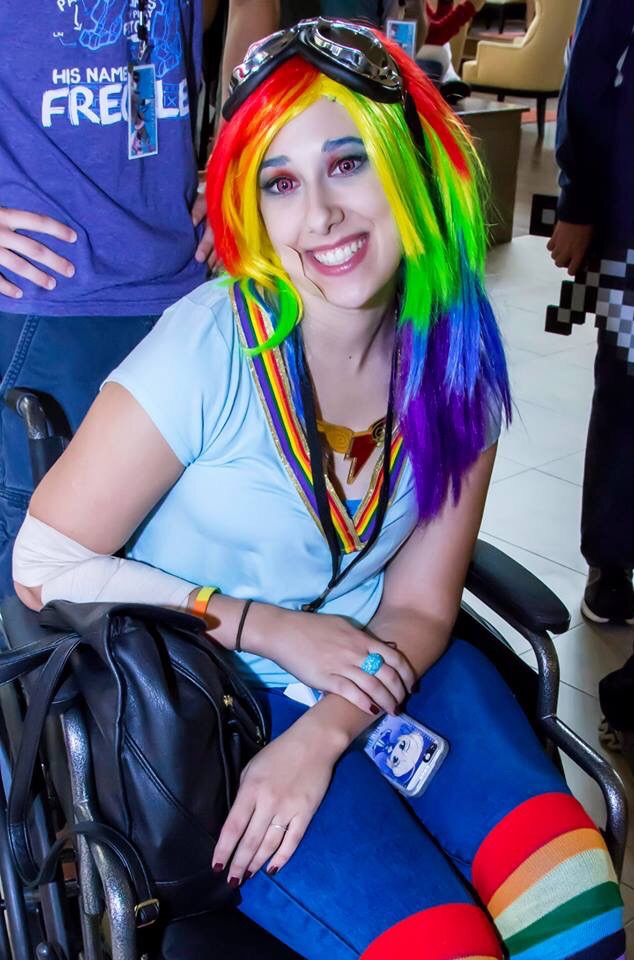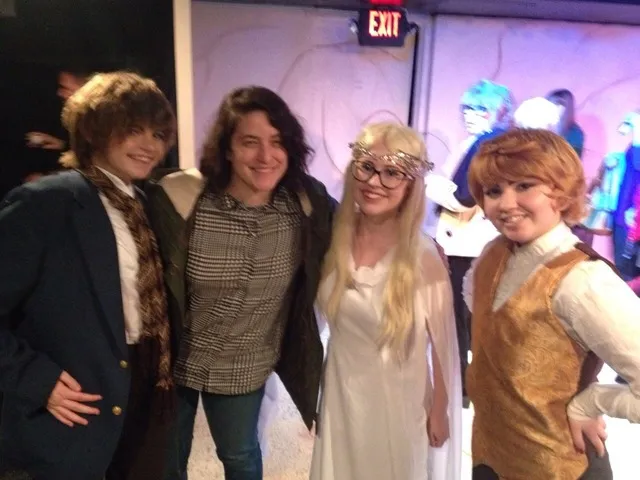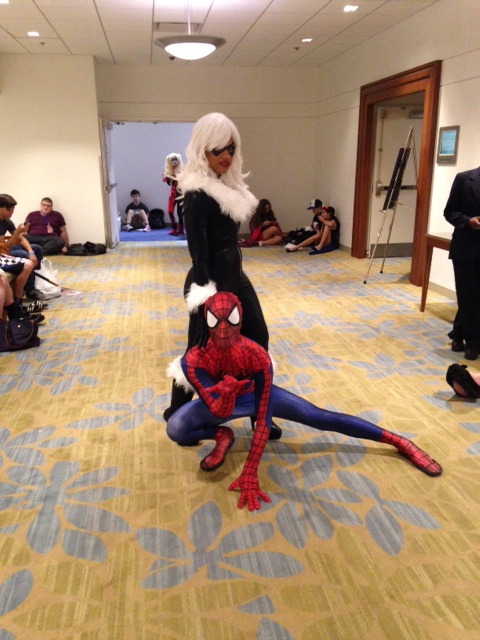[Editor’s Note: When Jordan Kass Lome reached out to The Mary Sue to share her awesome research on the cosplay community, I invited her to write a little bit about her work. You can find more over on her blog. Enjoy!-Carolyn]
My first experience with cosplay was at my first Anime convention in 4th grade. I was at Anime Boston with my older sister and father and it was noticeable that we were fresh blood. My Dad kept taking pictures of these weird people in outrageous yet amazing costumes. I had no context as to what this crazy world was but 15 years later it has become part of my lifestyle and research.
I put together a case study this year for Boston Comic Con about the role of the arts and body positivity in cosplay. I surveyed approximately 20 cosplayers about how they got in to cosplay, what draws them to the community, and what changes they’d like to see happen in the future. Some of the responses went far and beyond than what I was anticipating. I read stories about how cosplay brought people out of their personal bubbles, how it was a freeing form of art for them, and how many cosplayers hope to make this hobby a profession. The more cosplayers I surveyed, the more my research began to change. (My survey can be found here.)
I began documenting the responses I found in the form of a Tumblr ([email protected]) while also making the history of cosplay legible to external audiences (professors, fellow cohorts, and parents). One theme I found was the need to address the issues that cosplayers face, namely sexual harassment and body policing. We have seen sexual harassment horror stories about body cams, inappropriate touching, and lax policies from cons. I’ve also seen stories of cosplayers being ridiculed or “policed” based on their cosplay. “You can’t be that character because you are black!,” “You are too fat to be x character!,” “A dude can’t dress like a girl,!” etc. It’s impossible to be a cosplayer and ignore the amount elitism and policing in the community on top of the sexual harassment cosplayers of all genders experience at cons or online.
My research showed that there are still misconceptions regarding whether or not someone can cosplay something due to gender, race, height, weight, etc. But that policing and prejudice defeats what cosplay is about.

Pictured: @mermaidxsenpai
Survey answers also showed that, since there’s no primary destination for cosplayers to meetup other than cons or online, social media has become vital for connecting cosplayers with others in the community. Apps include Cosplyr, Anime Animo, CosplayNet, Cosplay Showcase, and Cosplanner are helpful in keeping cosplayers connected with other cosplay groups. These sites are cosplay specific in terms of target audience, yet prove that social media helps the community stay in place. They can also serve as artifacts for sustaining photos of cosplayers as they are visual blogs and portfolios of their work.
My blog contains my entire research including an advocacy piece proposal on making a cosplay fashion show to promote body positivity in the community and show how the arts play a vital role for cosplayers of color, disabled cosplayers, and LGBTQ+ cosplayers. My blog contains stories, videos, and examples of how cosplay is a creative empowerment tool in addition to a transformative craft!
Jordan Kass Lome is an art educator and researcher in Boston who helps develop creative marketing strategies for artists. She also loves to combine her fandom interests with her scholarship. She is currently finishing up a Masters of Education in Community Arts Education and probably expects to live the rest of her life as a village witch with lots of cats.
(images via Jordan Kass Lome)
—Please make note of The Mary Sue’s general comment policy.—
Do you follow The Mary Sue on Twitter, Facebook, Tumblr, Pinterest, & Google +?










Published: Oct 7, 2015 03:17 pm